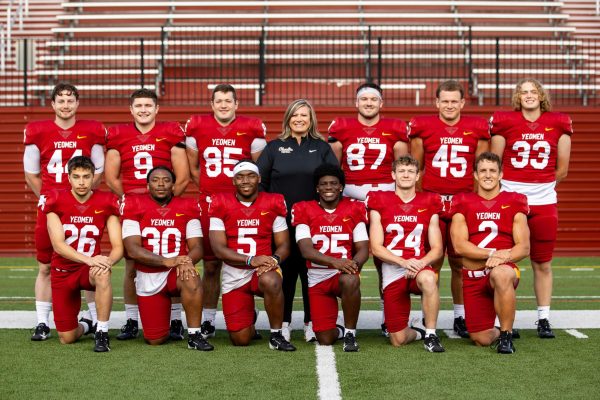BSAG and SAAC Team Up For Black History Month Celebration
The Oberlin Student-Athlete Advisory Committee held a Black History Month Celebration in Wilder Bowl on Feb. 27. In contrast to the Conservatory’s celebration of Black History Month this year, which received criticism for centering non-Black voices, the predominantly-white SAAC board enlisted the help of the recently-formed Black Student-Athlete Group to ensure a successful celebration.
“BSAG was very involved in the planning of the Black History Month Celebration,” said College fourth-year, baseball player, and BSAG Community Outreach Officer Lawrence Hamilton.
While SAAC sponsored and organized the event, College first-year, women’s basketball player, and BSAG SAAC Liaison Alyson Jefferson was a key voice in the planning.
“The way that BSAG adds to or bolsters SAAC is through our SAAC liaison, Alyson,” BSAG Co-Chair Malaika Djungu-Sungu said. “We ensure that a Black perspective is present in the SAAC space, which is usually full of white people.”
In addition to Jefferson, both of BSAG’s Co-Chairs, Djungu-Sungu and College third-year Kofi Asare, designed T-shirts that were distributed at the event, along with shirts designed by Associate Vice President for Athletics Advancement and Delta Lodge Director of Athletics & Physical Education Natalie Winkelfoos, Head Women’s Basketball Coach Stephany Dunmyer, and Director of Track & Field and Cross Country Ray Appenheimer.
The effort put forth by the members of the BSAG board, as well as the members of the SAAC board, led to a lively gathering. The celebration was held in Wilder Bowl, with music and food served by the Black-owned restaurant Steel Magnolia — and facts about Black culture and history were handed out along with the food.
“It was a good time,” Hamilton said. “I felt like it was a good celebration, while also highlighting Black pioneers with food from a Black-owned restaurant. It was mostly just a little get-together outside with food, drinks, and music playing. We just had a great time overall.”
Djungu-Sungu, who was unable to attend due to a time conflict with the Black History Month fashion show, sees the event as a good starting point. She hopes to see continued campus efforts to celebrate and support Black students.
“It was a step in the right direction that SAAC decided to celebrate Black History Month,” she said. “However, I believe more could always be done to celebrate Blackness. It was great to be able to support Steel Magnolia, but there is always room to improve promoting how SAAC supports the Black student community on campus.”
This collaboration with SAAC marks one of the first large-scale events BSAG has participated in. Its success, and its room for growth, will help the group figure out its plans as an organization.
“I think that recent things coming from SAAC show the impact of having [representation] for Oberlin athletic’s Black people because without the input that BSAG has been able to provide a lot of this stuff would not have even been considered as necessary,” Djungu-Sungu said. “Having a connection to SAAC allows us to ensure that programming is inclusive and ensure that the work of making the athletic space at Oberlin a truly antiracist one does not only fall on the backs of Black athletes, faculty, and staff.”
Jefferson sees both SAAC and BSAG as integral to the future of inclusivity and antiracist work on Oberlin’s campus and believes the Black History Month celebration should be viewed as the beginning of a new trend of highlighting Blackness, not just a one-off event.
“It’s important for Black athletes to have a safe space and people in leadership positions that look like them,” Jefferson said. “Oberlin College needs to do better in celebrating and recognizing their students of color. I’m glad SAAC wanted to show their support, but it takes more than just one event. For Black students, including myself, celebrating Black History and talent is all the time and not just one month out of the year.”






